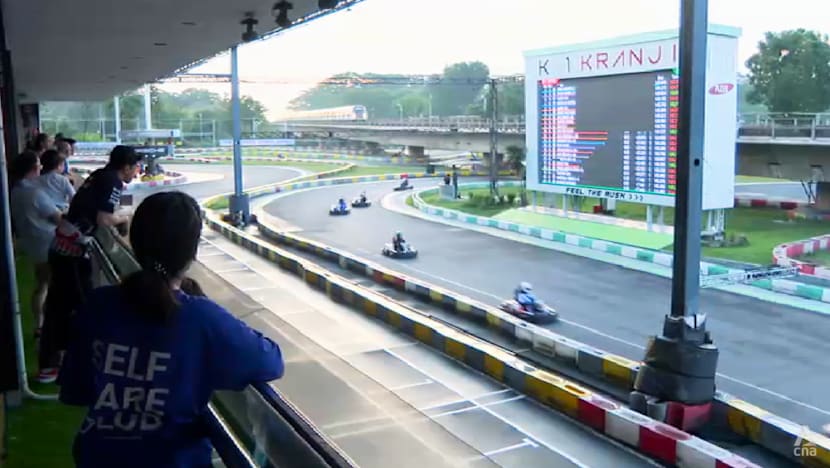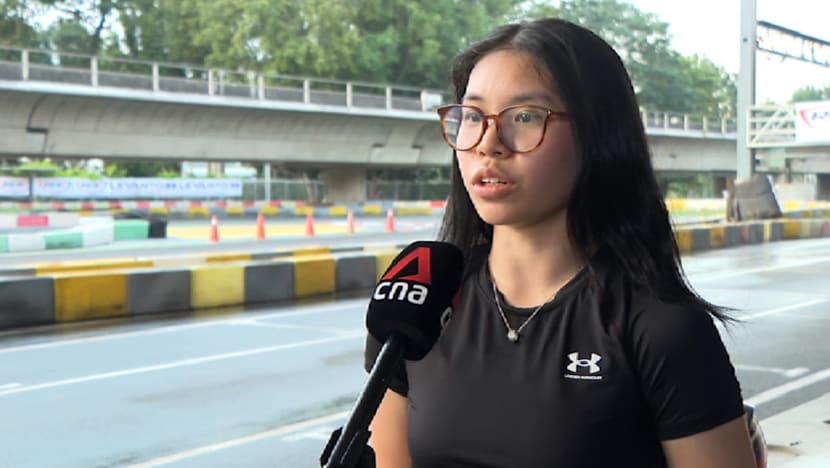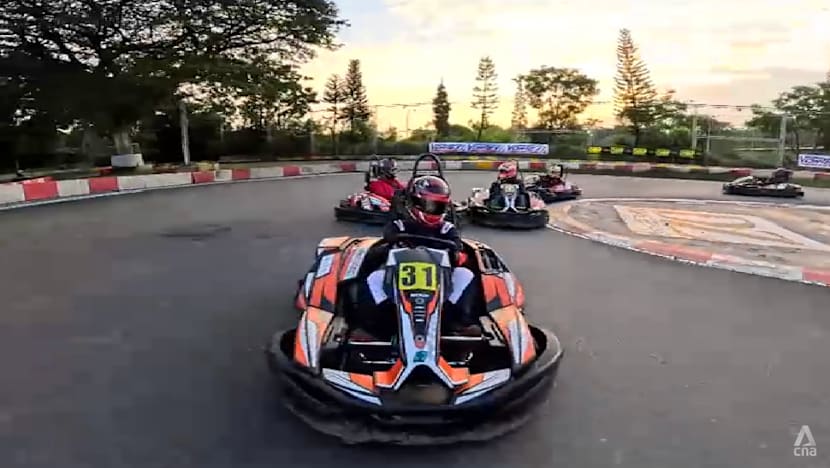Young drivers mull F1 dreams as Singapore’s only training track faces lease expiry
The lease on the KF1 Karting Circuit in Kranji is set to end next March, and the venue risks closure if owners fail to renew or extend the contract.

The KF1 Karting Circuit in Kranji is the only karting training facility in Singapore, and is where young aspiring drivers race.

This audio is generated by an AI tool.
SINGAPORE: At just 18 years old, Christian Ho made history this year as the first Singaporean to race in Formula 3 – a feeder series for the elite Formula 1.
"I'm really proud to bring Singapore to the top level. Of course, not F1 yet, but still the top level of where I'm at, and to be able to compete with other countries’ very best,” he told CNA.
After his F3 debut, he signed with Rodin Motorsport – a New Zealand racing team based in the United Kingdom – aiming to build on a promising start.
“Next year, I'm definitely trying to improve and bring Singapore to the top of the podium,” he said.
The KF1 Karting Circuit in Kranji is one of the tracks where Ho first started driving, years before his professional career accelerated.
The venue is Singapore’s only karting training facility. It has served as the launchpad for many other young drivers with ambitions of making it to the international racing scene.
But their journey to success may soon come to an abrupt stop, as KF1's lease is set to expire next March.
The company said it is currently in negotiations to renew or extend the lease.
If an agreement is not reached, the track will have to close by the end of 2026.
“I started (karting) probably when I was around 8 years old (here), so this track is like home to me and it's a bit sad to see it go away,” said Dillian Tan, a 16-year-old driver eyeing the pro leagues.
MORE INTEREST IN MOTORSPORTS
KF1 has seen interest in the sport grow over the years, especially as the Singapore Grand Prix gained momentum since its return to the country in 2008.
In 2015, the Kranji circuit attracted just 20 entries per amateur race. Now, up to 85 drivers vie for a spot in each lineup.
Among them is Ryan Keith, 18, who racing for seven years.
"My goal was to reach F1 but right now I'm looking more towards GT racing. I feel like that's the most hardcore racing series there is to do for what I can achieve,” he said, referring to Super GT, a top-level sports car racing series in Japan.
Reese Seow, another regular at KF1, said females are gaining more acceptance and recognition in the sport, both behind the wheel and in off-track roles.
“Basically, it's really hard for a girl to stand out … to be noticed in a field full of men. But at least now there's way more initiatives to get girls into motorsports,” said the 18-year-old.
F1 and its governing body FIA, for instance, now has a range of initiatives designed to create more opportunities for women on and off the track, including the F1 Academy and Girls on Track programme.
Seow started racing just two years ago after being inspired by a documentary on legendary F1 driver Michael Schumacher.
"I would like to someday race in F1 Academy, or at least get to single-seaters,” she said.

BUMPY ROAD TO PROFESSIONAL LEAGUE
But even before getting to the starting grid, drivers have to overcome daunting roadblocks – including cost and limited access to equipment and facilities.
“Everyone who comes through these doors aspires to be someone in racing. But at the end of the day, there’re a lot of factors. It's a bit challenging to get there,” said KF1’s project manager Daryl Chang.
A kart and essentials like tyres and fuel can set drivers back around S$35,000 (US$27,000).
Crew support, from mechanics to coaching, costs another S$12,000, while rack fees and other gear can add another S$8,000 or more.
Altogether, a first year at the semi-pro level can cost some S$55,000.

And if KF1 ceases operations, racers will need to go overseas to train.
“You can cross the border (to Malaysia), but it's going to create more logistical problems. Cost-wise, it will become even higher,” said Chang.
“Basically, it’s putting an end to the launchpad (in Singapore) for all these young racers.”
NOT GIVING UP
Still, some aspiring drivers say they are not hitting the brakes in their pursuit of their dreams.
"I think I'll train in Malaysia or Thailand. I'll be racing more in Asia next year,” said Tan.
Among his hopes is to one day cross the finish line in first place at the FIA Karting World Championship. However, he acknowledged the challenges in securing funds.
“Probably one of the most important support I need is (sponsorships). I need more networking, because in racing, it's really important to (secure) a good budget,” he said.
Meanwhile, he is finding success in simulator racing. He said it is a good alternative to racing on a track, especially for those who are unable to commit to the high costs of karting.
KF1’s Chang said that despite the sector’s efforts, aspiring drivers will eventually need to train overseas, as the local scene has limited exposure.
“When you talk about racing, Europe is like the main stage,” he said.
“So definitely, you have to go around the region, followed by the rest of the world. Singapore cannot provide you that level of competition.”
















